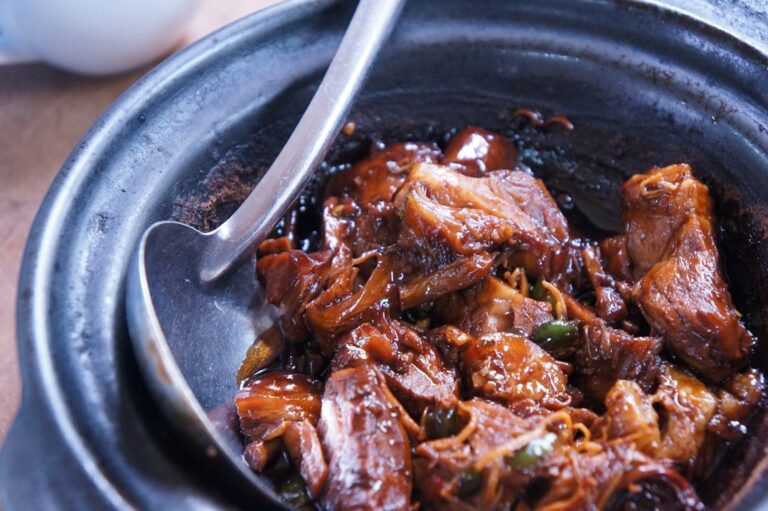
Introduction
Welcome to the vibrant world of Saudi Arabian cuisine, where flavors are bold, spices are aromatic, and hospitality knows no bounds. In this blog post, we’ll embark on a culinary adventure through the diverse and delicious dishes that make up the rich tapestry of Saudi Arabian food culture.
Traditional Saudi Arabian Dishes
One cannot explore Saudi Arabian cuisine without mentioning the iconic dishes that have been passed down through generations. Kabsa, a fragrant rice dish cooked with meat (usually chicken, lamb, or camel) and an array of spices, is considered the national dish of Saudi Arabia. Mandi, a close cousin of Kabsa, features tender meat cooked with rice in a flavorful broth. Shawarma, thinly sliced meat wrapped in pita bread with tahini sauce and vegetables, is a popular street food staple enjoyed across the kingdom.
The Influence of Arabic Cuisine
Saudi Arabian cuisine is deeply rooted in the rich culinary traditions of the Arabian Peninsula. Influenced by Bedouin, Levantine, and Persian cuisines, Saudi dishes feature a harmonious blend of flavors and ingredients. From fragrant spices like saffron and cardamom to staple ingredients like rice, lamb, and dates, Saudi Arabian cuisine reflects the diverse cultural tapestry of the region.
Saudi Arabian Street Food
In cities like Riyadh and Jeddah, the streets come alive with the sights and smells of delicious street food. Falafel, deep-fried chickpea patties served in pita bread with tahini sauce and pickles, are a popular snack enjoyed by locals and tourists alike. Kebabs, skewers of grilled meat marinated in spices, and samosas, crispy pastry parcels filled with savory fillings, are also beloved street food options.
The Role of Hospitality in Saudi Cuisine
Hospitality is at the heart of Saudi culture, and nowhere is this more evident than in the realm of food. In Saudi Arabia, guests are treated with utmost respect and generosity, and mealtimes are often lavish affairs. Traditional dining customs dictate that guests be served copious amounts of food and encouraged to eat to their heart’s content, reflecting the warmth and generosity of Saudi hospitality.
Modern Innovations in Saudi Cuisine
While traditional dishes continue to hold sway in Saudi Arabia, modern chefs and restaurants are putting their own spin on classic recipes. From fusion cuisine blending traditional Saudi flavors with international influences to innovative cooking techniques and presentation styles, the culinary landscape of Saudi Arabia is constantly evolving. Whether it’s fine dining in Riyadh or trendy cafes in Jeddah, there’s no shortage of culinary creativity to explore.
Health Benefits of Saudi Arabian Ingredients
Many staple ingredients in Saudi Arabian cuisine boast impressive health benefits. Dates, a ubiquitous ingredient in Saudi desserts, are rich in vitamins, minerals, and antioxidants. Chickpeas, a key component of dishes like hummus and falafel, are high in protein and fiber, making them a nutritious choice for vegetarians and vegans. Lean meats like lamb are a good source of protein and essential nutrients, while aromatic spices like cumin and turmeric offer anti-inflammatory properties.
Saudi Arabian Desserts and Sweets
No meal in Saudi Arabia is complete without a sweet treat to round off the experience. Kunafa, a decadent dessert made with shredded phyllo dough, cheese, and syrup, is a favorite indulgence during special occasions and celebrations. Baklava, layers of flaky pastry filled with nuts and sweetened with syrup, is another beloved dessert enjoyed across the Middle East. Ma’amoul, delicate shortbread cookies filled with dates or nuts, are often served with tea as a delightful afternoon snack.
The Future of Saudi Arabian Cuisine
As Saudi Arabia continues to embrace modernization and globalization, the culinary landscape of the kingdom is poised for further evolution. While traditional dishes will always hold a special place in the hearts of Saudis, there is growing interest in exploring new flavors and cuisines from around the world. With a burgeoning food scene and a new generation of chefs pushing the boundaries of creativity, the future of Saudi Arabian cuisine looks brighter than ever.
Conclusion
In conclusion, Saudi Arabian cuisine is a celebration of flavor, tradition, and hospitality. From aromatic rice dishes to indulgent desserts, each bite tells a story of the kingdom’s rich cultural heritage and culinary legacy. Whether you’re sampling street food in Jeddah’s bustling souks or dining at a Michelin-starred restaurant in Riyadh, Saudi Arabia offers a gastronomic journey like no other. So, next time you find yourself in the kingdom, be sure to savor every bite and immerse yourself in the vibrant world of Saudi Arabian cuisine.
FAQs:
- Are there vegetarian options available in Saudi Arabian cuisine?
- Yes, there are plenty of vegetarian options available in Saudi Arabian cuisine, including dishes like hummus, falafel, and fattoush salad.
- What are some traditional Saudi drinks to try?
- Traditional Saudi drinks include Arabic coffee (qahwa) and mint tea (shay bil nana), both of which are enjoyed for their refreshing flavor and cultural significance.
- Is it safe to eat street food in Saudi Arabia?
- Yes, street food in Saudi Arabia is generally safe to eat, but it’s always a good idea to choose vendors that look clean and hygienic.
- Can I find international cuisine in Saudi Arabia?
- Yes, Saudi Arabia is home to a diverse expatriate population, so you can find a wide range of international cuisines, including Indian, Italian, and Chinese.
- What are some must-try desserts in Saudi Arabia?
- Some must-try desserts in Saudi Arabia include Umm Ali (bread pudding), Basbousa (semolina cake), and Luqaimat (sweet dumplings drizzled with syrup).